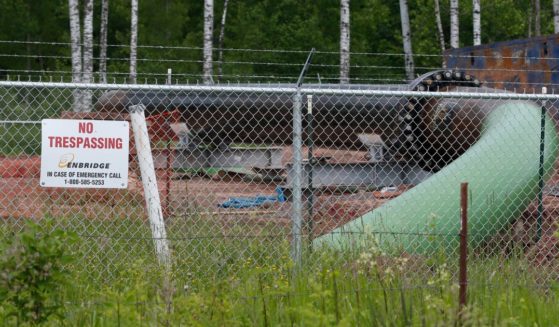Have You Seen the Price of a Two-by-Four Lately? Disturbing Inflationary Trends Are on the Rise
Those looking to take advantage of the spring weather and do some work on the house might need to prepare themselves for sticker shock before entering their local Home Depot.
They also might consider packing their credit card, as the price of two-by-fours skyrockets to record highs.
Commodity watchers took note of a milestone when 1,000 board-feet of lumber passed $1,500 in April for the first time in history. The price, which around $200 last May, hit $1,650 on Thursday — an eightfold increase — as “sawmills strive to keep pace with demand ahead of the peak spring construction season,” Trending Economics reported.
While home renovations following the pandemic lockdowns certainly are playing a role in high lumber costs, the Department of Housing and Urban Development also reported that housing starts in March were 19 percent higher than February and 37 percent higher than a year ago.
Lumber Just One Part of Larger Picture
In its April 14 report, the Federal Reserve called out commodity shortages and price spikes in several broad categories, “including some agricultural products, building materials, cleaning products, and microchips.” And while the Fed took pains to highlight that “prices only accelerated slightly” in the past month, it pointed out temporary causes such as “ongoing supply chain disruptions, temporarily exacerbated in some cases by winter weather events.”
But not all economists are so reserved. Paul Ashworth of Capital Economics said “the shortages were largely a result of factories being unable to keep up with pent-up demand that was being unleashed as consumers emerged from the pandemic ready to spend,” The New York Times reported.
“This is better described as suppliers working at, or near, capacity and still unable to keep up. Expanding capacity will take a lot longer.”
Microchip Shortage Affecting Everything from Smartphones to Cars
The Fed’s April report seemed to casually include microchips in its list, but the shortage of microchips is severe. The scarcity is blamed largely on the pandemic, which shut down factories but also spiked demand for computers — the fastest growth in 20 years — for the new legion of stay-at-home workers.
The Wall Street Journal reported that it is not the most advanced chips that are experiencing shortages. Rather, it is “the high demand for older, less-sophisticated semiconductors used widely in products such as cars, computer monitors, speakers and appliances — products that have been hoovered up during the pandemic.”
Indeed, late last year, Apple delayed launching the new iPhone for two months because of the shortage, according to Forbes. Now, Samsung might not even release the next Galaxy Note smartphone.
Looking to Buy a Car? Prepare to Pay MSRP or More
Ford recently announced it would slash the number of vehicles it planned to produce this year in half — 1.1 million units — due to the chip shortage. It will also take a charge of $2.5 billion to its quarterly earnings.
German semiconductor company Infineon estimates that a lack of microchips may result in 2.5 million fewer cars produced worldwide during the first half of the year.
And the used car market is not providing much respite.
With more Americans feeling better about the economy and fewer cars being manufactured, used car prices have exploded. Car research site Edmunds reported that in March the average price of trade-ins hit $17,080 — up 21 percent from a year ago.
Home Prices Highest on Record
The price of lumber and other materials has driven up construction costs, with a new home costing $35,872 more to build than last year. The high cost of lumber adds nearly $13,000 alone. Realtor.com reports median home prices for the U.S. now top a whopping $375,000. In comparison, the median price reached $278,000 during the height of the housing bubble in 2006, adjusted for inflation.
And tight inventories are not helping. With the foreclosure moratoriums still in place, the vacancy rate reveals that a mere 1 million homes are currently for sale in the country — a level not seen since the 1980s, Wolf Street reported.
Don’t Say the I-Word
In light of all this, all eyes are on the Federal Reserve, which reported a March increase of 0.6 percent in the Consumer Price Index and an annual increase of 2.6 percent — slightly above the Fed’s target of 2 percent. Though it did report a monthly spike of 9.1 percent in gasoline prices.
Nevertheless, the Fed does not appear to be concerned about inflation. The Wall Street Journal reported that “it has shifted from focusing on trying to act in advance of inflation based on its forecasts, to waiting until inflation actually arrives.”
Not everyone agrees, though. Warren Buffet spoke at Berkshire Hathaway’s annual shareholder meeting on Saturday and said, “We are seeing very substantial inflation. We are raising prices. People are raising prices to us and it’s being accepted.”
Whether or not we’re entering an inflationary cycle, our grandchildren may marvel at how we once burned wood in a fireplace.
Truth and Accuracy
We are committed to truth and accuracy in all of our journalism. Read our editorial standards.












